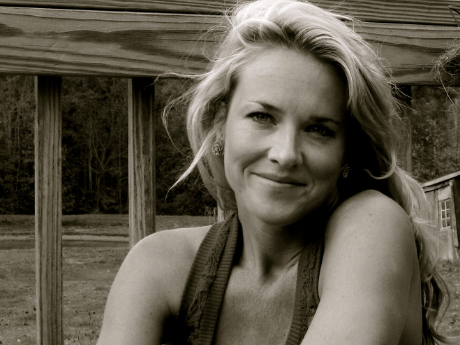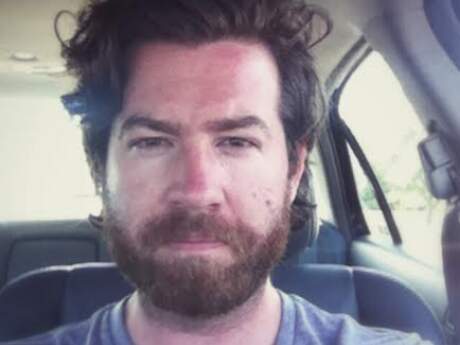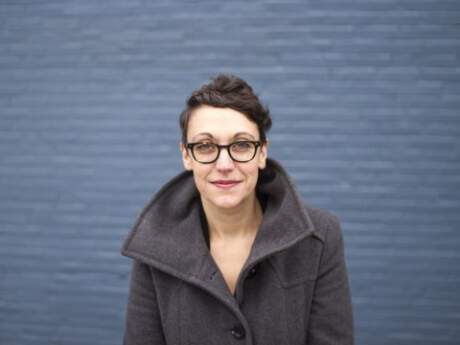New American Poets
New American Poets: Allison Seay

Time of Need
In the road, a dog. Days dead,
that dog. Liliana was walking beside me awhile
(I am sure) and I was almost not crying but then found
what I was looking for.
She heaved it for me—all of it, the stench, the weight—
in her thin arms until it was too much.
Tired, she dragged the thing by its wasted paws
all the way home. Her dress was stained. This is how
I learned about love. She did not mind at all
the silent, steady distance I placed between us.
All rights reserved. Reprinted with the permission of the author.
Introduction to the work of Allison Seay
Joshua Poteat
To See The Queen assembles the species of poem(s) humans should not have to write. We should not be haunted. We should not break apart.
There is God, towns, rooms. There is Liliana, the figment, the sadness. There is Before the joy, there was the end.
I do not say this lightly: You do not want to see the queen.
But the queen came to see only me and I saw her.
Nietzsche said To survive is to find some meaning in the suffering. Nietzsche said a lot of things. Forget Nietzsche. Seay presents a way out of suffering, a new atlas built out of dogs and sickness and fire and fields.
No one asks questions anymore no one
mentions her or how it is
she vanished and she does vanish
she comes and goes and remains away
until I see the green paint cracking
as a vein in the wall
and like that the queen is here again
Despair becomes an object here, a way to place the specter of a mind into a vessel and hold it. An attempt to reason with God. There is of course no reasoning, no witness.
There she is with a house in her eyes,
or what's left of it, the house no longer a house.
Bachelard called it topoanalysis…the systematic psychological study of the sites of our intimate lives. The topoarchitectural arc of To See The Queen, from God to town to room, constructs a landscape of inner states, all irreconcilable, visceral, terraforming trauma into earth ruled by a frighteningly absolute ghost-monarch forever pinning and unpinning her crown.
The ancient sadnesses live in this book. I hold it and do not know which pain to protect. I read it in a corporate office high-rise facing east over the town Seay was born in. From here, the century pulls apart and the sky is flooded with milk shapes.
Like a composer attaching one end of a bone to her piano and biting the other end to feel the tremors of her music, Seay reaches across the divide of self and other, desolation and dry land. She is showing us the way.
I read one way to become yourself again
is to repeat the stories so I sit still
and tell once more about the spines.
No book can deliver the ghosts yet this book delivers the ghosts. And the spines. Then transcends them.
Plath, Pessoa, Wolfe, Styron, Sexton, Anne Carson, Donald Justice, Jack Gilbert. To See The Queen joins the melancholy beauties of our time, nestles among them, fights to dig out of it all. Help her dig.
Statement
Allison Seay
I wrote To See the Queen very slowly, and with caution. I have been asked before to summarize it and I am able to see that the poems are concerned with the crises of great sorrow and the mercy that follows. Of course, I hope the poems invoke much more than that-- as all artists, I would think, hope their work communicates beyond what they intend, or shifts in ways they could not have predicted. Liliana appears and reappears as a figment, representative of debilitating sadness, a god-queen that reigns over despair and clemency alike. It was exceedingly important to maintain a delicate, if blurred, balance between the real and the unreal, all with the hope that the book would transcend a personal interiority in order to address larger themes of desire and grief, illness and faith, pain and beauty—that emotional arc which makes a life. I think one of the tasks of great art is an invocation of the particular, (the confessional, the anecdotal), as a way to transcend it. The inner, psychic world can be harrowing and wild but then (by some power that seems outside the self, greater than the self) become a sanctuary.
I am a believer in what Jack Gilbert and Linda Gregg call "the deepest thing," by which I think they mean the truth, the truest truth, the deepest truth, whether it is sadness or joy, politics, God or gods, sexuality, anxiety, family, desire, loss, love, Greece. Sometimes one can get to the deepest thing by dismantling the creation in order to find the amulet buried. Other times, one must keep building it, or must start anew. No matter how I get to it, whatever necessary risk I must learn to take, the important thing is to find whatever is the resonant source and then clarify--through image, metaphor, all the tools and licenses a poet must possess--the experience. This is, as Linda says, how you preserve the "seed corn of the heart." Different themes or ideas may press on a poem, different lenses and prisms may be placed over a poem, but without a deepest thing, there is no poem, no life blood. My poetics are that simple, and that complex, I suppose: the poem knows more than the poet if she allows it to be held correctly in her heart.
I have recently had the great privilege of visiting Civitella Rainieri, an artist's colony housed in a 15th century castle in Umbertide, Italy, near the border of Tuscany and Umbria, and I stayed for six weeks. It was my first time abroad, and the longest I had ever been a visitor anywhere. I am wholly transformed by the landscape there-- the beauty and weather of the hill towns, the language, the tiny chapels I visited, Saint Francis's cell with his stone bed and wooden pillow in a monastery outside of Cortona, Piero della Francesco's Madonna del Parto in the small town of Monterchi that remains such an icon for the people there-- especially pregnant women who make a pilgrimage to lay roses at the alter-- that when it was in danger of being moved to a gallery in New York, the women lay down in the street in protest. The poems I began writing in Italy feel very different from the work in To See the Queen but in ways I am not yet able to see clearly, or articulate with the kind of clarity that may come weeks or years from now.
Reading Elizabeth Bishop's "One Art" made me want to be a poet. The trajectory from there is what I think of as "process" or "poetics." Part of my process, no matter where I am, requires solitude, long days of quiet and aloneness, extended hours of seclusion, the stillness of the self. I like the idea of the poet as witness, and I never feel I can observe wholly unless I can do it alone and silently. If I had been asked before I went to Italy about the way landscape affects my work, I would have explained about my world-view being an interior geography, one more myopic than telescopic, more concerned with the rooms of the heart and mind than with the beauty and terror of the external world. And yet, to make art answers some spiritual or psychological need that is indivisible from preservation and survival; there was my life before Italy, and my life after and still the mission is the same, my "poetics" are still true to the reason I began writing poetry in the first place: it is a matter of the life and death of (write it!) the soul.



